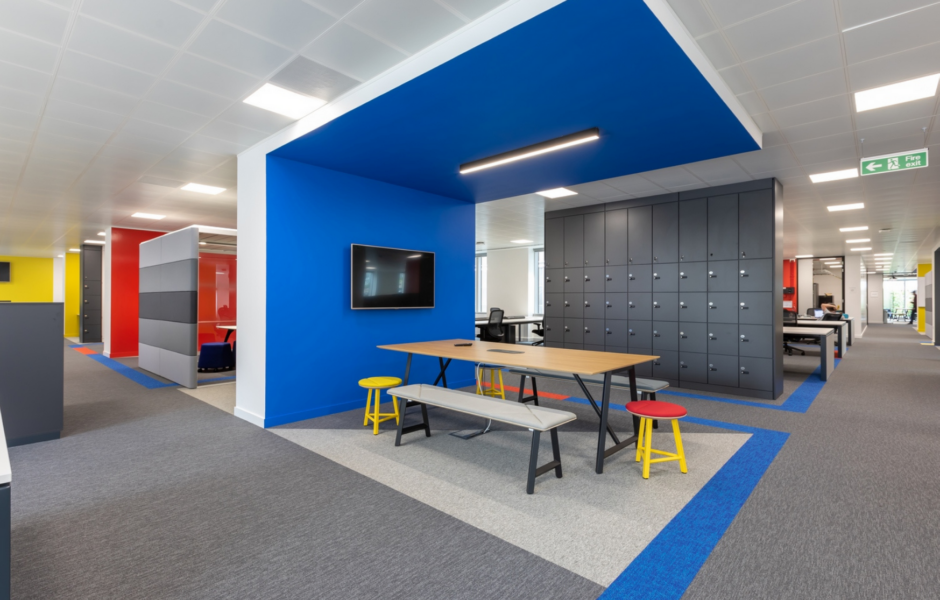
Workplace Trends for 2021
2020 may be long gone but its effects are still being felt around the world. With the UK ‘roadmap’ set out towards the end of lockdown, it’s time to look at returning to our workplaces, but what can we expect these to look like post-Covid?
Flexible working and the rise of the hybrid workplace
Flexible working is nothing new; however, it is definitely something the majority of businesses are now considering. Flexible working can mean splitting time between working from home and working in the office or it can mean working more flexible hours to fit into each individual’s schedule. The term ‘Hybrid working’ (a buzz word for 2021) refers to an effective working blend from a series of locations. They will likely include your main business office, home working or elsewhere such as co-working facilities. Locations to suit lifestyle and work requirements.
The benefits of allowing flexible working are that your employees feel trusted and empowered and can even increase productivity as they get to choose where they complete certain tasks. More focused, solitary work can be easier to complete from home as there are less distractions while some tasks may require support from colleagues that isn’t the same over video calls.
Another benefit of flexible working is that it allows a business to expand its talent pool as location is no longer a restriction. Employees can be based further afield and only travel to the office intermittently whilst working from home majority of the time.
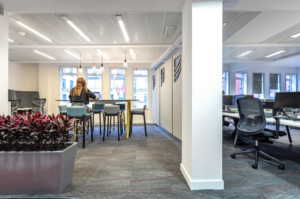 In 2019, we created the perfect hybrid workplace for our existing client, Haines Watts. Merging two London locations into one, we were instructed to create an agile workplace where employees could work and collaborate when and how they wanted to. To learn more about how their hybrid workplace has supported Haines Watts throughout the pandemic, have a read of their case study blog.
In 2019, we created the perfect hybrid workplace for our existing client, Haines Watts. Merging two London locations into one, we were instructed to create an agile workplace where employees could work and collaborate when and how they wanted to. To learn more about how their hybrid workplace has supported Haines Watts throughout the pandemic, have a read of their case study blog.
The office as an experience and a sense of community
When we do return to our various workplaces across the Country it is highly likely that there will still be restrictions and rules that we will need to follow which will make the office experience feel different for a little longer.
Many companies will be using this time to plan and implement their variation of the hybrid workplace model, meaning that not everyone will be able to be in the office as before on a daily basis. Whilst employees aren’t completely cut off from the business when working from home, the workplace will be seen as the place to go for social interaction, effective collaboration and traditional communal experiences.
As said by Doug Lowrie, Workplace Experience Director at Wx, Sodexo, “the design of our offices needs to be around how effectively we facilitate engagement, social activities, and collaboration in a great experience.” [1]
Treating the workplace as a cultural and social hub will elevate the workplace into a new post-Covid future and support team development and collaboration. This can help attract and retain the younger workforce which are just entering the workplace as they value company culture and morals more than any other generation.
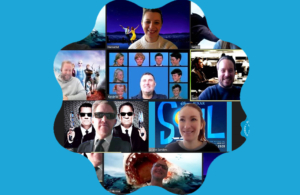 At Blue Jelly, we have been in frequent communication with all members of staff and regularly have company Zoom calls to catch up on what’s happening in the business and with each other. Whilst we’re looking forward to the day that we can have these conversations in person, it’s been a fabulous way of keeping everyone connected (to an extent) to the business and to the rest of the team.
At Blue Jelly, we have been in frequent communication with all members of staff and regularly have company Zoom calls to catch up on what’s happening in the business and with each other. Whilst we’re looking forward to the day that we can have these conversations in person, it’s been a fabulous way of keeping everyone connected (to an extent) to the business and to the rest of the team.
Health and wellbeing
Over the past few years we’ve seen a dramatic increase in the need for workplaces that support employee’s mental health as well as their physical health. With employee wellbeing already at the forefront of most workplace designs, employees are demanding more than just a desk and chair from their workplace.
Now we have been given a roadmap to when and how we get life back to ‘normal’, the question every employee needs the answer to is ‘how safe am I in my workplace?’.
Social distancing signs, hand sanitiser stations and protective desk screens may still be common place as part of the new norm. To minimise the spread of any germs, Covid or otherwise, employees are calling for more stringent cleaning to take place and are more likely to want to work from home if they feel their workplace is unsafe.
In a recent survey by Honeywell, 68% of workers feel unsafe about returning to their workplaces. Employees are asking for better air quality and stricter health and safety process to help ease their anxiety on returning to their office.
It’s worthwhile to remember, however, that creative planning and layout can be equally crucial in maintaining a heathy distance and promoting a feeling of safety and wellbeing. When a solution blends the best environmental conditions, light and layout, then communication and knowledge flow can thrive in a culture of togetherness. So the role of the designer, supported by services specialists, has taken on a greater level of emphasis and importance.
 We completed a project for Amicus Therapeutics where they also had a big focus on employee wellbeing and wanted a workplace that supported their employees mental and physical health. Spread across two floors, we installed a moss wall to instil a connection with nature, we designed a meditation and prayer room, and we even installed a gym which the employees use to have walking meetings if they feel so inclined.
We completed a project for Amicus Therapeutics where they also had a big focus on employee wellbeing and wanted a workplace that supported their employees mental and physical health. Spread across two floors, we installed a moss wall to instil a connection with nature, we designed a meditation and prayer room, and we even installed a gym which the employees use to have walking meetings if they feel so inclined.
Activity based working and human centric design
Activity based working (ABW) is the identification that employees perform different day-to-day activities and therefore there is no ‘one size fits all’ when it comes to the working styles available in the workplace. A way of working that may work well for one employee doesn’t mean that it will be productive for another, even if they’re completing similar tasks.
Simply put, along with flexible working, ABW gives employees the control over where and how they work. From focus pods for solitary work to high tables and booths for more informal collaboration sessions, workplaces need to offer a diverse range of working styles to allow employees to complete their work in an environment they’re comfortable in.
Some of the main advantages of ABW are that it can encourage inspiration and creativity as it allows the employee to work in an environment that is best suited to their needs and to the task at hand. This can lead to increased employee wellbeing it allows the employee to be in their desirable environment and shows that they are trusted by their employer to complete their work without being micromanaged.
In addition to this, employees have been used to working from home for a year therefore they’re used to working in a relaxed environment which they are looking to replicate when they return to their workplace. By putting employees at the heart of the workplace design it can encourage them to feel happy and safe to return to the workplace.
 At Irwin Mitchell, we created a large breakout area, several focus rooms for individual work, and several larger meeting rooms for team gatherings and client meetings. Scattered throughout the workplace were booth seating and ad hoc meeting spaces for informal conversations. The events of the past year have reinforced the need for variety, with both secluded and well-planned communal spaces being of equal importance for a hybrid workforce.
At Irwin Mitchell, we created a large breakout area, several focus rooms for individual work, and several larger meeting rooms for team gatherings and client meetings. Scattered throughout the workplace were booth seating and ad hoc meeting spaces for informal conversations. The events of the past year have reinforced the need for variety, with both secluded and well-planned communal spaces being of equal importance for a hybrid workforce.
Sustainability
One positive to come from the global pandemic is the much-needed rest nature took to restore itself. With airplanes being grounded and less people on the roads, the world was able to repair some of the damage done to the ozone layer which meant we Brits had one of the hottest summers on record. Now that things are returning to a post-Covid normal, people are more aware of their carbon footprint than they ever have been before.
We had little to no choice but to rely on video conferencing tools, like Zoom and Microsoft Teams, to complete our everyday work during the pandemic. Thanks to this new technology we expect less people to travel for face-to-face meetings that could be held remotely thus reducing the amount of pollution being caused.
Lots of manufacturers have had sustainable products on offer for many years and we’re seeing a higher demand for more of these kinds of products with every client we speak to. In fact, some clients will pick certain products due to their sustainable qualities as well as the design of the product.
At Compassion, they wanted to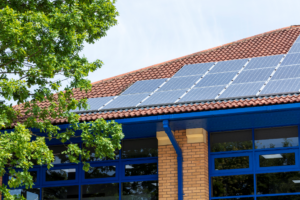 have a completely sustainable workplace that could supply all its own energy and support future sustainable initiatives. With that in mind, we mounted solar panels on their roof and installed several car charging ports to withstand the future growth of electric vehicles.
have a completely sustainable workplace that could supply all its own energy and support future sustainable initiatives. With that in mind, we mounted solar panels on their roof and installed several car charging ports to withstand the future growth of electric vehicles.
At Blue Jelly we are very conscious about the affect we are having on our planet and ensure that we do everything we can to reduce the amount of waste we create and achieve our target of recycling 95% of site waste on every project we complete. To find out more about what we’re doing to help our planet, visit our Green Jelly page.
It goes without saying that the workplace will still play a vital role in a business. It provides a central hub for teams to engage, collaborate and socialise which can promote team bonding and productivity whilst instilling the company culture into each employees day-to-day working life.
To help navigate the complicated return to the workplace, we’ve created an informative document that is full of the knowledge we’ve learnt from our clients, industry experts and key suppliers over the course of the pandemic. Get in touch with us to receive your copy.

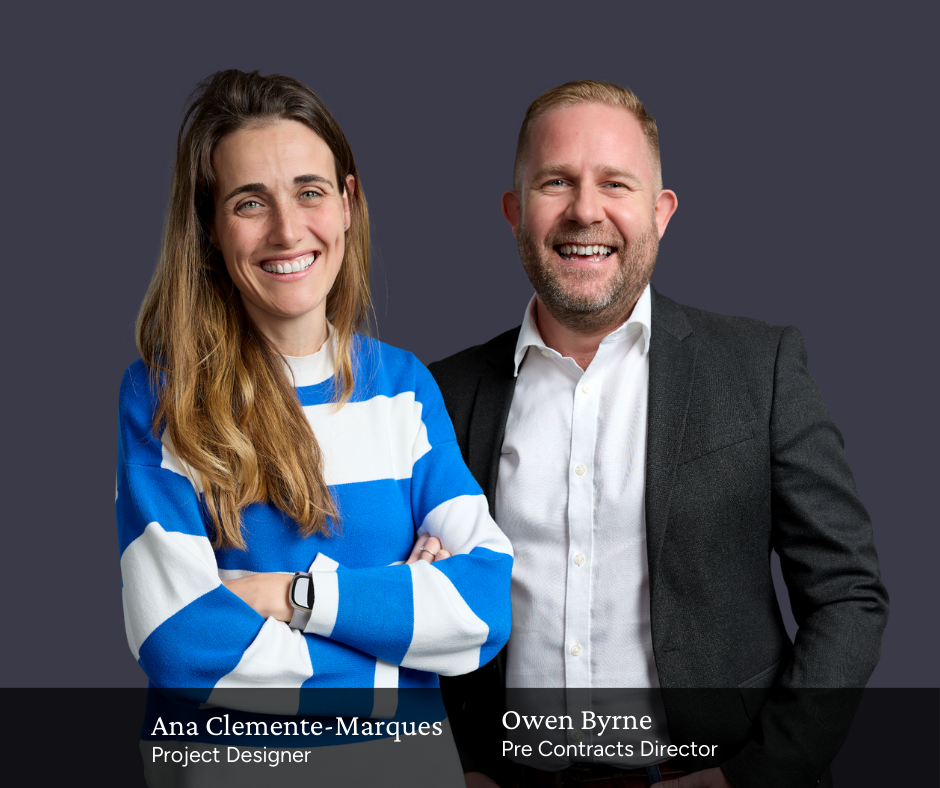
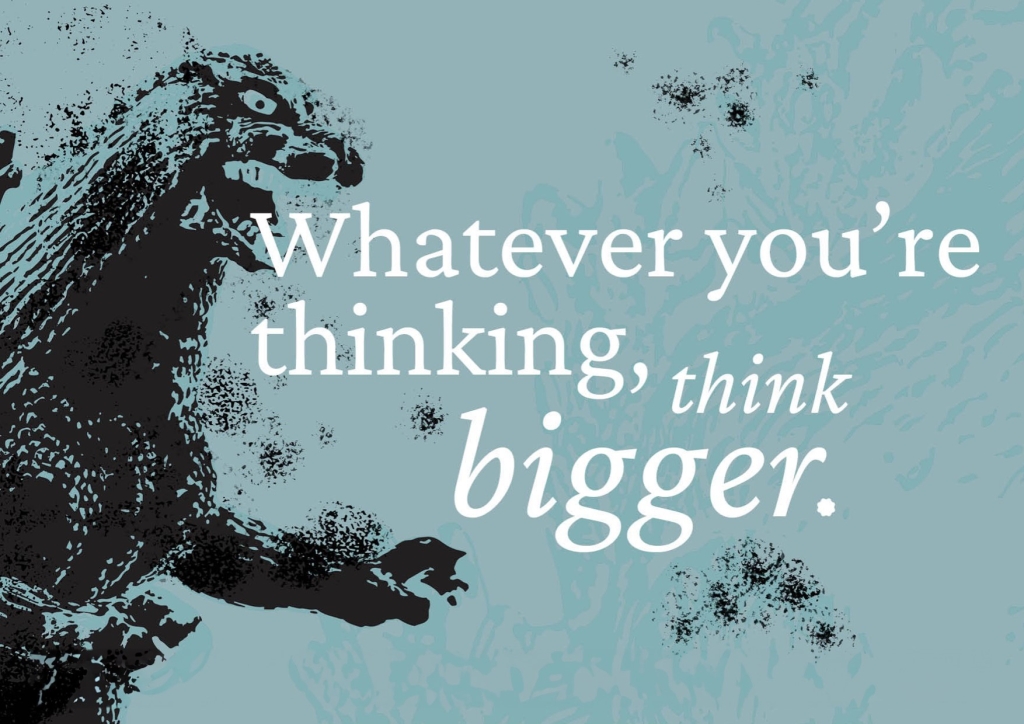

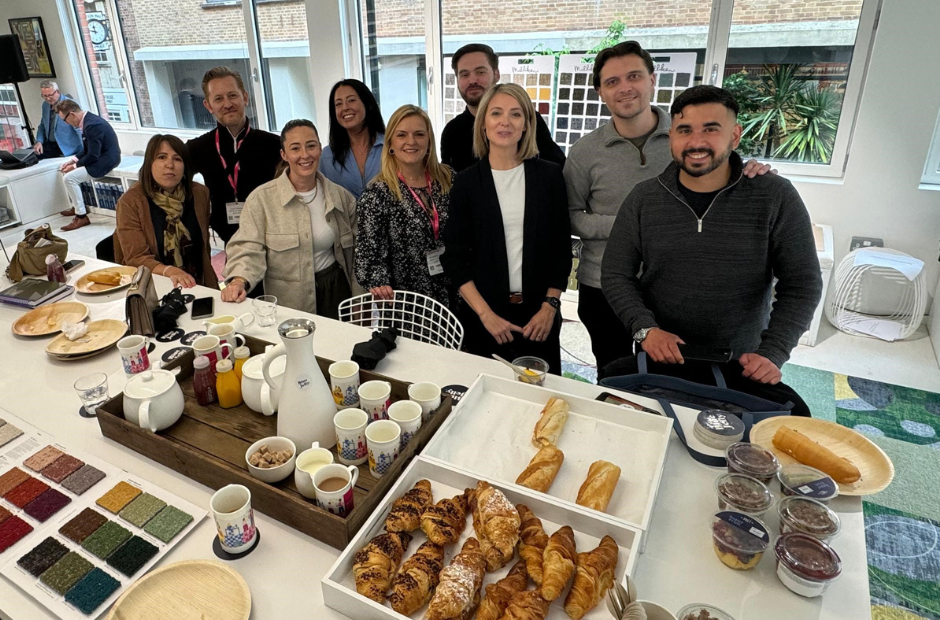


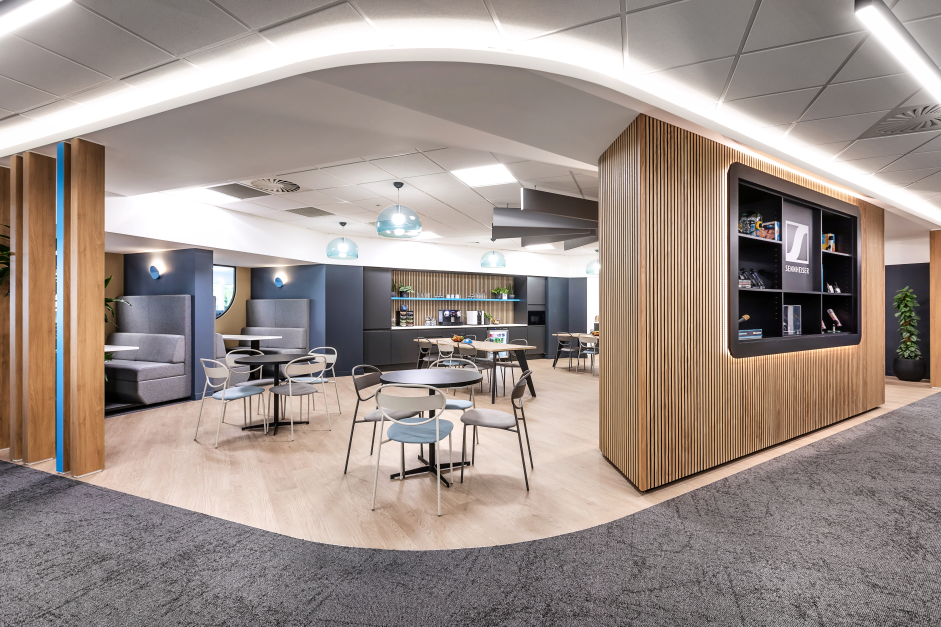
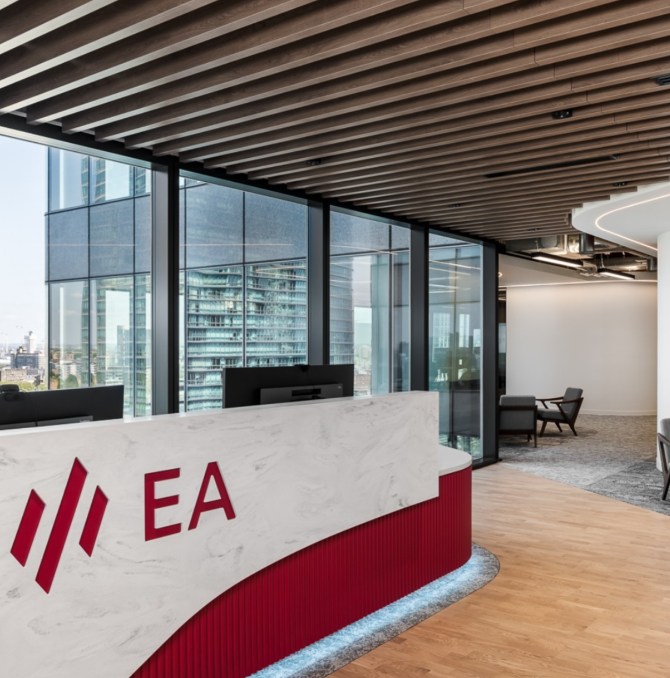
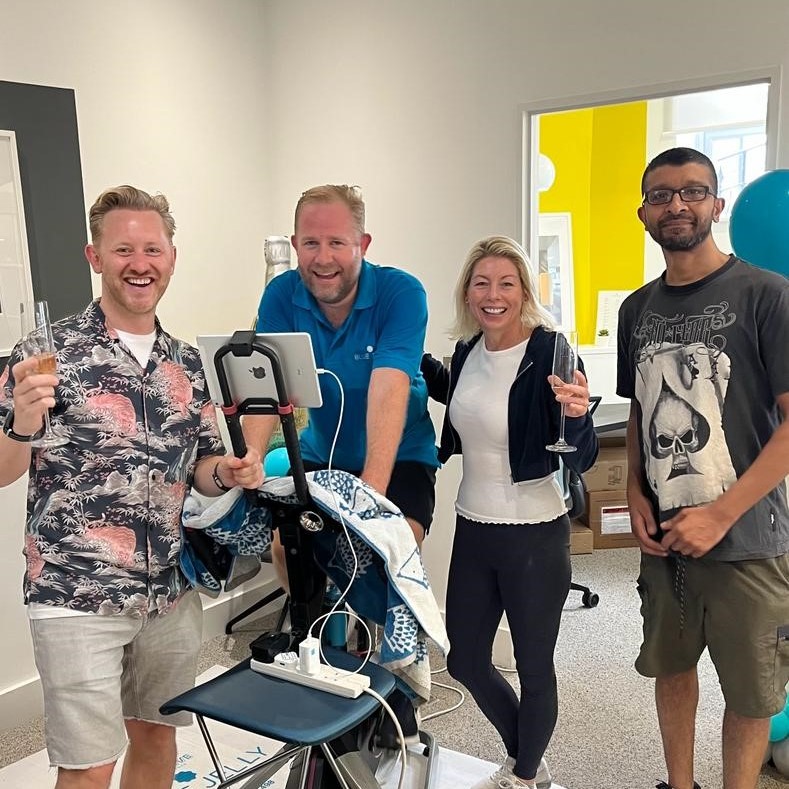

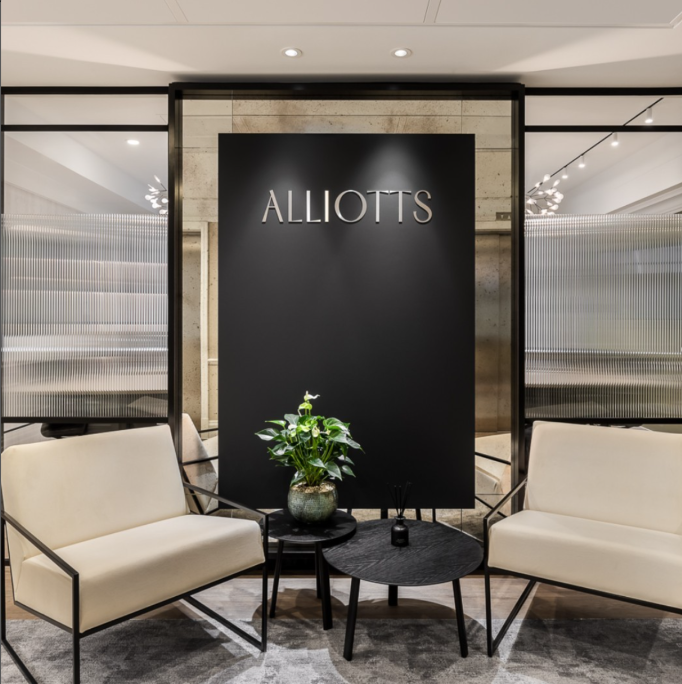

Our Core Values are what make us Blue Jelly.
We are Ambitious
Highly driven, forward thinkers who won’t shy away from a challenge. Bringing big ideas to the table and making them a reality. Always striving to be the best that we can be.
See more at www.bluejelly.net
#WeAreAmbitious #PlacesWherePeopleWantToWork #WorkplaceDesignandBuild #ThinkBigger